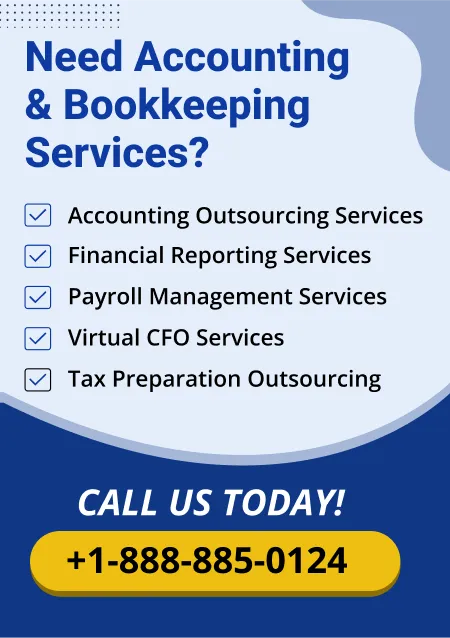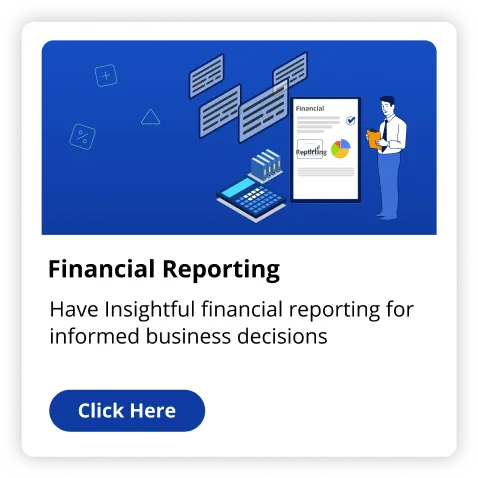Restaurant accounting has its unique language of hospitality finance. It can be a daunting task. Your restaurant can achieve the success you're after. This can be done with an effective accounting system in place. This step-by-step guide to restaurant accounting is designed to simplify and make your bookkeeping tasks accurate. It provides a sense of relief in your financial management.
It's crucial to understand the intricacies of the food industry. This information empowers you to make informed financial decisions. This article provides an overview in this step-by-step guide.
Restaurant Accounting: An Overview
Restaurant accounting is the system of interpreting, analyzing, recording and economic data for a restaurant. An accountant in a restaurant has many responsibilities. It involves recording transactions in the general ledger, accurately coding, classifying transactions to bank statement reconciliation, etc.
Keeping your restaurant's books straight, current, and accurate is not just a task but a crucial responsibility that directly impacts the financial success of your business. Utilizing restaurant accounting software can help you manage all your bookkeeping needs, from creating professional invoices to tracking time, reinforcing the importance of your role in the business's success.
Gifts of Accounting for a Restaurant
Accurate restaurant accounting has various benefits for the growth of the business. Accounting leads to better financial management. They have additional profound insights into your business's economic status.
You'll also learn to take control of your prime costs. It also adjusts menu pricing based on demands and inventory expenses.
Methods in Restaurant Accounting
You can select between money and accrual accounting if your restaurant has less than $1 million in revenue. The most ordinary accounting method for restaurants is cash accounting. This method enables companies to record their generated income when cash is received from aids rendered or paid for expenses and costs. This method is preferred since restaurants and bars deal with much cash daily.
Switching to accrual is better if your restaurant has more than $1 million in revenue. Accrual accounting records monetary transactions as they happen. This method provides you with a different way to analyze activity in your restaurant. It also provides more information about how your income is generated, expenses are incurred, etc.
Bookkeeping for a Restaurant: How to Do?
Setting up your books is essential. But there are some points to note before setting up. It involves:
1. Find The Proper Bookkeeper
You know the challenges of running a restaurant as an owner. It involves staffing, controlling the cost of goods sold and selecting a bookkeeper who understands the complexity of the food and beverage industry. After all, both front-of-the-house operations and back-of-the-house management.
2. Use Accounting Software
Choose an accounting software that best suits your restaurant's needs. The ideal software should streamline your data entry tasks. It also creates customized invoices, follows your revenue, etc. It should offer robust reporting features. The right software can significantly affect the efficiency and accuracy of your restaurant accounting.
3. Set Up the Chart Of Accounts
Next, you have to set up your chart of accounts. It helps to categorize the money flowing in and out of your company. A standard chart of accounts involves assets, liabilities, costs, revenue, etc. This is further broken down into company-specific categories. It includes inventory, sales, etc. While setting up the chart of accounts, deciding the metrics you want to monitor is essential.
4. Select A Point of Sale (POS) System
You need a POS system for cash management. It involves sending or printing receipts, inventory, and order management. Select a system that is simple to use for employees that seamlessly ties in with your accounting software.
Things You Need to Track
There are some things you should track or follow. It involves:
1. Payroll
Payroll in the restaurant establishment can be challenging. The tracking of employee hours is hard. Different wages and staff positions are the norms in the restaurant establishment. Their ability to accommodate different rates is essential.
According to the National Restaurant Association, there are 14.7 million people in this industry. Ten per cent of the workforce in the United States comprises restaurant employees. Most of them are hourly or part-time.
Computing restaurant payroll can be a hassle with irregular work hours, multiple positions, and different pay types. It is good to outsource the payroll function or use payroll software to do your work.
2. Accounts Payable
Paying your bills on time and keeping your vendors happy is necessary for the efficient functioning of a restaurant. The accounts payable represent the amount you owe the suppliers.
Update them on the accounting software once you receive the invoices. This will enable you to keep following the payment schedule.
3. Inventory
You can set up an inventory management system that optimizes food expenses. It will be based on the size of your restaurant. The inventory also enables you to avoid food shortages.
Follow your consumables and supplies to compute the value of the food in stock and decide the average daily inventory expenses.
4. Cash Management
Monitor your cash flow. That refers to the amount of cash coming in versus the amount of money going out of your business. It may be daily, weekly, or monthly.
5. Sales
Keeping track of your revenue is vital to restaurant bookkeeping. Use the accounting records to show how much you earn from food sales, merchandise sales, etc. Find out how much revenue you make each day and ideally break them further into food and beverage classifications.
6. Reconciliation
You must reconcile all your accounts. It involves bank accounts, loans, credit cards, lines of credit, etc. Reconciling will ensure that you've accounted for everything and will help you confidently ensure your financial reports are accurate.
Restaurant Accounting Mistakes: How to Evade?
Evading the common restaurant accounting mistakes requires us to identify them. The common errors involve:
- POS Transactions and Expenses: The improper posting of POS transactions and costs is at the top of the list of common mistakes. This involves tips and sales tax not being involved in the sales, discounts, and comps not being separated on the Profit and Loss Report. Evading these errors includes detailed training for any staff that works with the POS system and uses the cash-based method for accounting daily.
- Inventory Records: When inventory isn't recorded correctly, you can end up with inaccurate COGS and Profit and Loss Reports. Long-term things like alcohol, dry goods, and shelf-stable elements last longer than one inventory period and must be appropriately recorded. Accurate inventory figures recorded on the books enable additional inventory measures.
- Third-Party Delivery Sales: Deposits from third-party delivery providers, like Uber Eats or Doordash. It involves sales minus the commission marketing, delivery, credit card fees, etc. These items need to be separated and tracked accurately net, not gross, to represent your bookkeeping accurately.
Restaurant Accounting Software: Recommendations
The availability of your accounting data is a founding aspect of any restaurant's success. The more information you have easy access to, the more accurate your books will be. You need software that presents your economic position to make informed and savvy decisions.
Good accounting software allows you to process, gather, and analyze data. POS system integration is an essential part of any restaurant accounting software you use for your restaurant. The software can automate the categorization of your economic dealings. It will happen once it is integrated. It allows you to track your economic performance in real-time. It also mitigates errors that occur with manual restaurant accounting.
Winding Up Note
Accounting for restaurants can be arduous, but it doesn't have to be a regular struggle if you choose the suitable approaches. Investing in the right restaurant accounting software is necessary. Bringing on professionals with up-to-date insight to manage your books is also a crucial thing.
Follow the steps in this guide for the growth of your establishments. When in doubt, you can contact Fino Partners for advice. Staying on top of your financial records and regular accounting enables you to grow and scale your company. The right tools and partners in place make it possible to focus on creating good client relationships to keep your restaurant running for years to come.
Remember, Fino Partners is here to provide you with services.
Read Also Outsourcing Restaurant Accounting Services: A Cost-Effective Solution for U.S. Businesses


























